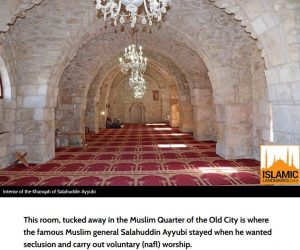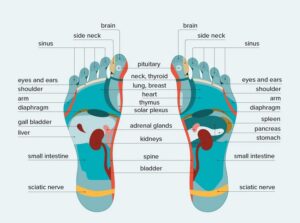REMEMBERING SALADIN’S LIBERATION OF JERUSALEM – Rajab of 583 AH (1187 CE) (2 October 1187)
![]()
On Rajab of 583 AH (2 October 1187), corresponding to Salahuddin al-Ayyubi liberated Jerusalem after 88 years of Crusader occupation.
Ayyubid Sultan Salah Al-Din (known in the West as Saladin) liberated Jerusalem from the Crusaders nearly a century after they captured the holy city from the Fatimid Caliphate.
What: Salahuddin’s liberation of Jerusalem
Where: Palestine
When: Rajab of 583 AH (2 October 1187)
The Crusader Kingdom of Jerusalem
With a cry of ‘Deus vult!’ – Latin for ‘God wills it’ – head of the Roman Catholic Church Pope Urban II ignited the flame for the Crusades in 1095, urging Christian Europeans to go on ‘armed pilgrimage’ to Jerusalem and reclaim the Holy Land from Muslims. An army of 100,000 undertook the mission, forming the First Crusade.
On 15 July 1099, Jerusalem, which had been recaptured by the Fatimids from the Seljuks the year before, fell to the Crusaders after a brutal siege which lasted for over a month.
Their victory laid the foundations for the establishment of the Crusader Kingdom of Jerusalem.
Salahuddin Ayyubi’s rise to power
At the time, Muslim forces in the Middle East and North Africa region were divided, with power struggles between and amongst the Sunni Seljuks in the Levant and the Shia Fatimids in Egypt.
Sultan Nur Al-Din Zengi, who ruled much of the Syrian province of the Seljuk Empire between 1146 and 1174, sought to unite all Muslim forces between the Euphrates in Mesopotamia and the Nile in Egypt in order to defeat the Crusaders.
Salahuddin, who was born in 1137 into a Kurdish Sunni military family had gone on a military expedition on behalf of Nur Al-Din to Egypt alongside his uncle Shirkuh to help the wazir (adviser) to the Fatimid Caliph Al-Adid, Shawar, to resolve internal power struggles and assert his rule. However, Shawar, the effective ruler of Egypt, soon allied with the Crusaders against Shirkuh and the Zengids.
Upon the personal request of the Caliph Al-Adid, Shirkuh came back to Egypt to fight off Crusader incursions. He later had Shawar executed and, despite being Sunni, was appointed wazir by the Shia Caliph. But Shirkuh died soon after, and Salahuddin was appointed wazir in his place.
Salahuddin consolidated his position in Egypt and, upon the Caliph’s death, became ruler of Egypt and abolished the Fatimid Caliphate.
Indeed Nur Al-Din extended his dominance across large parts of the Muslim world, but he died before he achieved his ultimate goal of liberating Jerusalem. Defeating other claimants to Nur Al-Din’s throne in Syria, Salahuddin was proclaimed sultan.
Salahuddin had spent over a decade unifying Muslim cities under Sunni rule. He established the Ayyubid dynasty and asserted his rule over Egypt, Syria, Upper Mesopotamia, the Hejaz, Yemen and much of the North African coast, finally realising Nur Al-Din’s dream.
In 1185, Salahuddin agreed to a truce with the Crusaders, allowing him time to deal with political problems in the Muslim world and raise a large army.
Two years later, in 1187, French Crusader Lord of Oultrejordain Raynald of Châtillon raided a Muslim caravan, violating the truce.

Salahuddin’s siege of Jerusalem
After unifying Muslim lands under his rule, Salahuddin was ready to take on the Crusaders in light of Raynald’s violation of the truce. The Kingdom of Jerusalem was, at this time, also internally divided.
On 4 July 1187, Salahuddin’s armies scored a great victory at the Battle of Hattin near Tiberias, the most pivotal defeat to befall the Crusaders. Crusader King Guy de Lusignan and many Crusader princes and lords, including Raynald of Châtillon, were captured. Salahuddin killed Raynald in fulfilment of a vow that he made following the latter’s murderous attacks against Muslims.
After the Battle of Hattin, which dealt a major blow to both the morale and military might of the Crusaders, Salahuddin moved against many Crusader states and conquered almost every Crusader territory in the region, clearing the path to retake Jerusalem.
The holy city had become a refuge for most of the Crusaders of the Levant, and fighters who fled previous defeats against the Muslims. They held out in defence of Jerusalem as Salahuddin’s forces descended on the city and besieged it.
The Muslim army bombarded the city walls using catapults and tried to storm the city several times. After a 12-day siege, on 2 October 1187, the leader of the Christian forces, Balian of Ibelin, surrendered the city.
In contrast with the bloody takeover by the Crusaders who massacred 40,000 Muslim and Jewish inhabitants upon entering Jerusalem in 1099, the handover to Muslim control was peaceful. The Crusaders were given safe passage out of the city and Christian places of worship were left intact. Arab Christian communities were allowed to stay.
After 88 years in the hands of the Crusaders, the Muslims, led by Salahuddin, entered Jerusalem once again.
Masjid al-Aqsa is no ordinary Masjid.
The Prophet (ﷺ) dedicated a great deal of his life nurturing the Sahabah (Companions) to appreciate the excellent qualities of Masjid al-Aqsa. Some of the reasons why Masjid al-Aqsa should form an important aspect of a believer’s dedication is that it is:
- The first qiblah for Muslims;
- The station of al-Isra and al-Mi’raj;
- The second house of Allah built on earth;
- The place where hundreds of Messengers of Allah (ﷻ) are buried;
- The place where many Sahabah are buried;
- A place where miracles were shown by Allah’s will;
- A place which Allah (ﷻ) Himself calls a ‘blessed place’;
- Referred to directly and indirectly, 70 times in the Quran;
- The place where angels have descended with Allah’s message;
- The only place on earth where all the Messengers of Allah prayed at the same time led by the Prophet Muhammed (ﷺ)
- The only Masjid mentioned by name in the Quran apart from the Ka’bah
- Most religious Jews regard entry into the al-Aqsa compound (which they call the Temple Mount) as a violation of Jewish law. This restriction is based on the belief that even though the Temple (of Solomon) was destroyed centuries ago, the precise location of the Holy of Holies, the sanctuary that was once entered by the High Priest, is not known. Hence the restriction is applied to the entire compound. They believe that the Temple should only be built after the coming of their Messiah, and it is their belief that it would be presumptuous of people to force God’s hand. However, there are several Jewish groups who differ from this opinion. Many Evangelical Christians consider it to be a prerequisite to Armageddon and the Second Coming (of Jesus), and both are actively encouraging the rebuilding of the Temple on the Aqsa ground.



